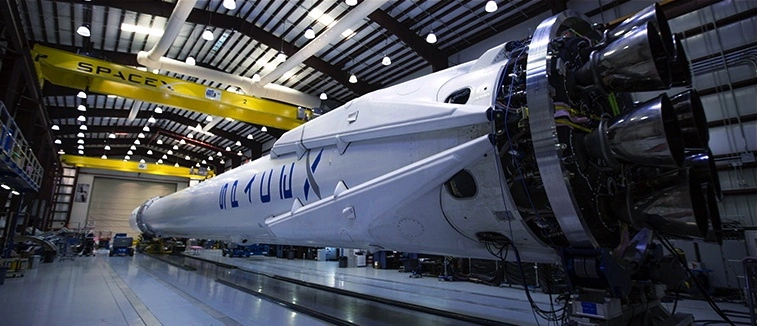
Aeronautical and Aerospace Engineering
Overview
The Aeronautical and Aerospace Engineering BEng (Hons) programme is best for those students who show interest in aircraft and spacecraft and tackle the biggest challenges in the aerospace industry. This course strongly focusses on aircraft and spacecraft engineering, with a solid foundation in mechanics and systems design.
Throughout the course, students will learn physics, math, materials, and computer science to design and build fantastic aircraft and spacecraft. The course combines theoretical learning with hands-on experience in aerodynamics, propulsion, materials, and avionics, preparing students for careers in the aerospace industry.
Objectives
- Understanding aerodynamics, propulsion systems, and structures.
- Equipping students with design, analysis, and testing skills.
- Preparing graduates for roles in vehicle design, production, and maintenance.
Prerequisites
- Strong background in mathematics and physics.
- Passion for aerospace and engineering design.
- Commitment to lifelong learning and personal development.
- Strong communication and interpersonal skills.
- Desire for positive impact.
Curriculum Outline
- Professionalism and codes of conduct
- Corporate social responsibility
- Engineering and responsibility
- Ethics in innovation and research ethics
- Mathematics
- Physics
- Engineering Fundamentals
- Aerospace Fundamentals
- Aerodynamics
- Aircraft Structures
- Propulsion
- Control Systems
- Mathematics
- Aircraft Design
- Aerospace Materials
- Avionics
- Space Systems
- Elective Courses
- Individual Project
- Capstone Design Project
- Elective Courses
- ABET Accreditation
- Co-op Programmes
Teaching Method
- Laboratory classes
- Lectures and tutorials
- Seminars
- Guest Lectures
- Project work
- One-to-one meetings
- Industry fieldwork
- Hands-on experience
Modules
- Computers in Engineering Analysis
- Design and Manufacturing-1
- Thermofluids-1
- Solid Mechanics
- Engineering Materials
- Engineering Mathematics
- Engineering Mechanics
- Vibration and Control
- Design and Manufacturing-2
- Economics and Management
- Mechatronics and Measurement Systems
- Thermofluids- 2
- Aerospace Vehicle Design
- Aerodynamics and Aerospace Propulsion
- Aerospace Flight Mechanics
- Individual Engineering Project
- Finite Element Methods of Analysis
Assessment Methods
- Laboratory
- Coursework
- Teamworking
- Practical assessments
- Presentations
- Written exams
- Project reports
Course Duration
This programme may vary depending on the institutions and countries, but the general standard options in the UK are:
- 03 - 04 years full-time
- 01 Work placement (Optional)
Facilities
- CAD/CAM laboratories
- Computer Labs
- Wind tunnels
- Flight simulators
- Material testing labs
- Aircraft Hangars and Workshops
- High-performance computing facilities
- High-tech aerospace design software and simulation tools
- Research groups
- Access to research grants and funding
Career Pathways
- Aviation
- Construction
- Finance
- Armed forces
- Automotive
- Utilities
- Consultancy
- Project Engineer
- Advanced Manufacturing Research Centre with Boeing
- Flight Physics Engineer, Airbus
- Research Engineer, AMRC
- Gas Turbines Design Engineer, Assystem UK
- Avionics Technical Engineer, British Airways
- Nuclear Engineer, EDF Energy
- Helicopter Pilot & Licensed Engineer, Heli-Jet Aviation
- Test Engineer, Jaguar Land Rover
- RAF Officer, RAF
- Manufacturing Engineer, Rolls-Royce Plc
Fees and Fundings
- Tuition fees are £32,250 (per year) and may vary depending on the institution.
- Scholarships, grants, and financial opportunities are available.
- Government loan aid is available.
Entry Requirements
This course may vary depending on the specific programme and institution, but the standard minimum entry requirements (UK) are:
- English Language requirement
- Extended Project Qualification (EPQ)
- International Project Qualification (IPQ)
- Welsh Baccalaureate Advanced Skills Challenge Certificate (ASCC)
Field Work and Internships
- Opportunities for internships with aerospace companies and research institutions.
- Real-world aerospace projects and collaborations with industry experts.
Certifications
- Professional Engineer (PE)
- Chartered Engineer (CEng)
- Chartered Professional Engineer (CPE)
- Aircraft Maintenance Technician (AMT)
- Flight Test Engineer
Intakes
Typically, it takes twice a year (fall and spring), but may vary like:
- Fall (September/October)
- Spring (January/February)
- Summer (May/June)
Student Testimony
"Do it! Whether you’re looking for a course to keep doors open or to specialise, this course is great. The flexibility to take the first two years to decide what you want to do is a great help." Says - "Dhanika Kapoor, Aeronautical and Aerospace Engineering BEng (Hons)".
Frequently asked questions
Aeronautical and Aerospace Engineering is a field of engineering that deals with the design, development, construction, and operation of aircraft, spacecraft, and missiles. It involves a deep understanding of physics, mathematics, and engineering principles to create innovative and efficient vehicles.

